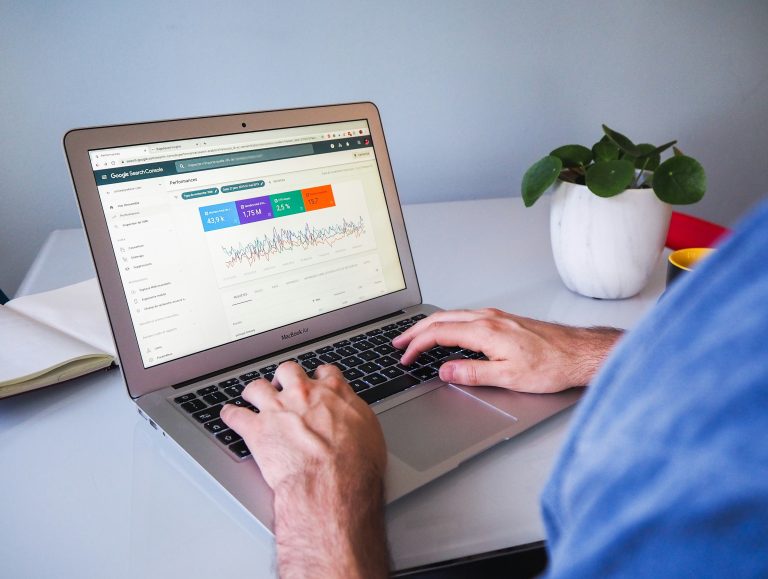How to Check if Your Website is Indexed by Google
Introduction
Creating an online presence for your business or personal brand is paramount in today’s digital landscape. However, simply having a website is not enough; you need to ensure that it is visible to your target audience. One of the most crucial steps in achieving this visibility is getting your website indexed by Google, the world’s largest and most widely used search engine. In this comprehensive guide, we’ll explore the significance of Google indexing, how it works, and the best practices to ensure your website is properly indexed.
Table of Contents
- Understanding Google Indexing
- Importance of Google Indexing
- How Google Indexes Websites
- Checking if Your Website is Indexed
- Troubleshooting Indexing Issues
- Best Practices for Improving Google Indexing
- Frequently Asked Questions
Understanding Google Indexing
Google indexing is the process by which Google’s web crawlers, known as Googlebots, discover, analyze, and store information about web pages. This information is then added to Google’s extensive index, which serves as the foundation for its search engine. When a user performs a search query, Google scans its index and retrieves the most relevant and valuable web pages based on the query’s keywords and other ranking factors.
Importance of Google Indexing
Being indexed by Google is crucial for several reasons:
- Visibility: If your website is not indexed by Google, it becomes virtually invisible to potential visitors who use the search engine to find information or products related to your business.
- Traffic Generation: Indexing is the first step towards driving organic (non-paid) traffic to your website from Google searches. Without being indexed, your website cannot appear in search results, limiting your ability to attract potential customers or clients.
- Search Engine Optimization (SEO): Proper indexing is a prerequisite for effective SEO efforts. Even if you implement various SEO strategies, they will be ineffective if your website is not indexed by Google.
- Credibility and Authority: Being indexed by Google can enhance your website’s credibility and perceived authority, as users often associate indexed websites with trustworthiness and relevance.
How Google Indexes Websites
Google’s indexing process involves several steps:
- Discovery: Googlebots constantly crawl the web, following links from one page to another, to discover new and updated web pages.
- Rendering: Once a web page is discovered, Googlebots render the page as a user would see it in a web browser, including executing JavaScript and processing CSS styles.
- Analysis: The rendered page is analyzed, and its content, structure, and metadata are extracted and processed.
- Indexing: If the page meets Google’s indexing criteria, its content and metadata are added to Google’s index, making it accessible for search results.
- Ranking: When a user performs a search query, Google’s algorithms analyze the indexed pages and rank them based on various factors, such as relevance, quality, and user experience.
It’s important to note that Google does not index every page it discovers. Pages that violate Google’s webmaster guidelines, contain low-quality or duplicate content, or have technical issues that prevent proper rendering may be excluded from the index.
Checking if Your Website is Indexed
There are several methods to check if your website is indexed by Google:
- Google Search: The simplest way to check if your website is indexed is to perform a site-specific Google search by entering
site:yourdomain.comin the search bar. If your website is indexed, you should see a list of pages from your domain in the search results. - Google Search Console: Google Search Console is a free tool provided by Google that offers valuable insights into your website’s indexing status and performance in Google Search. By verifying your website in Search Console, you can access the “Index Coverage” report, which provides detailed information about the pages that have been indexed, as well as any issues that may be preventing indexing.
- Third-Party Tools: Several third-party tools, such as Small SEO Tools’ Google Index Checker, allow you to check the indexing status of multiple URLs simultaneously. These tools can be particularly useful if you need to verify the indexing of a large number of pages quickly.
Troubleshooting Indexing Issues
If you discover that your website or specific pages are not indexed by Google, there could be several potential reasons:
- Technical Issues: Problems such as broken links, server errors, or robots.txt file misconfiguration can prevent Googlebots from accessing and crawling your website effectively.
- Content Quality: Google prioritizes indexing high-quality, original, and valuable content. If your website contains thin, duplicate, or low-quality content, it may be excluded from the index.
- Lack of Internal and External Links: Googlebots rely on links to discover new pages. If your website lacks internal linking or has few external links pointing to it, Google may have difficulty finding and indexing all of your pages.
- Noindex Tags or Directives: If you have inadvertently implemented noindex tags or directives on your website, Google will respect these instructions and exclude the affected pages from its index.
- Site Age and Authority: New websites or those with low authority may take more time to get indexed by Google, as the search engine prioritizes established and authoritative sources.
To troubleshoot indexing issues, you can use Google Search Console’s “Index Coverage” report, which provides detailed information about any crawling, rendering, or indexing problems encountered by Google. Additionally, you can use Google’s URL Inspection Tool to diagnose specific indexing issues for individual URLs.
Best Practices for Improving Google Indexing
To ensure that your website is properly indexed by Google and to maximize your chances of appearing in search results, follow these best practices:
- Create High-Quality Content: Develop valuable, original, and engaging content that provides a great user experience. Google prioritizes indexing websites with high-quality, informative, and well-structured content.
- Optimize Technical Aspects: Ensure that your website is free from technical issues, such as broken links, server errors, or robots.txt file misconfiguration, which can hinder Google’s ability to crawl and index your pages effectively.
- Implement Proper Internal Linking: Create a logical and user-friendly internal linking structure that helps Googlebots discover and understand the relationships between different pages on your website.
- Earn High-Quality Backlinks: Encourage other reputable websites to link to your content, as backlinks are a strong signal of authority and relevance for Google’s indexing algorithms.
- Submit a Sitemap: Create and submit an XML sitemap to Google Search Console, which provides a roadmap for Googlebots to crawl and index your website’s pages efficiently.
- Avoid Blocking Googlebot: Review your robots.txt file and ensure that you are not inadvertently blocking Googlebots from crawling and indexing your website.
- Monitor and Fix Issues Regularly: Regularly monitor your website’s indexing status through Google Search Console and address any issues promptly, such as fixing crawl errors or updating outdated content. You can also invite your team to collaborate on issue fixes — view our How To Add User to Google Search Console article.
- Be Patient: It can take time for Google to discover, crawl, and index new or updated pages on your website. Consistent effort and adherence to best practices are key to achieving and maintaining proper indexing over time.
Frequently Asked Questions
1. How long does it take for Google to index a website?
The time it takes for Google to index a website can vary depending on several factors, such as the website’s size, content quality, and authority. Generally, it can take a few days to a few weeks for Google to discover and index a new website or new content added to an existing website. However, submitting a sitemap to Google Search Console can expedite the indexing process.
2. Can I request Google to index my website?
Yes, you can request Google to index your website or specific pages by using the “Request Indexing” feature in Google Search Console. However, this does not guarantee immediate indexing, as Google still needs to crawl and evaluate your website’s content and quality before adding it to the index.
3. Does having more backlinks help with indexing?
While backlinks are not a direct factor in Google’s indexing process, they can indirectly help with indexing. High-quality backlinks from reputable websites can signal to Google that your website is authoritative and relevant, potentially increasing the chances of being indexed and ranked higher in search results.
4. Can I remove pages from Google’s index?
Yes, you can remove pages from Google’s index by using the “Remove URLs” tool in Google Search Console or by implementing the “noindex” tag or directive on those pages. However, keep in mind that removing pages from the index may negatively impact your website’s visibility and search engine traffic.
5. How often should I check my website’s indexing status?
It’s a good practice to regularly monitor your website’s indexing status, especially after making significant changes or adding new content. Checking your website’s indexing status in Google Search Console at least once a month is recommended to identify and address any potential issues promptly.
By following the best practices outlined in this guide and regularly monitoring your website’s indexing status, you can ensure that your online presence is visible to your target audience and maximize your chances of driving organic traffic from Google Search.






